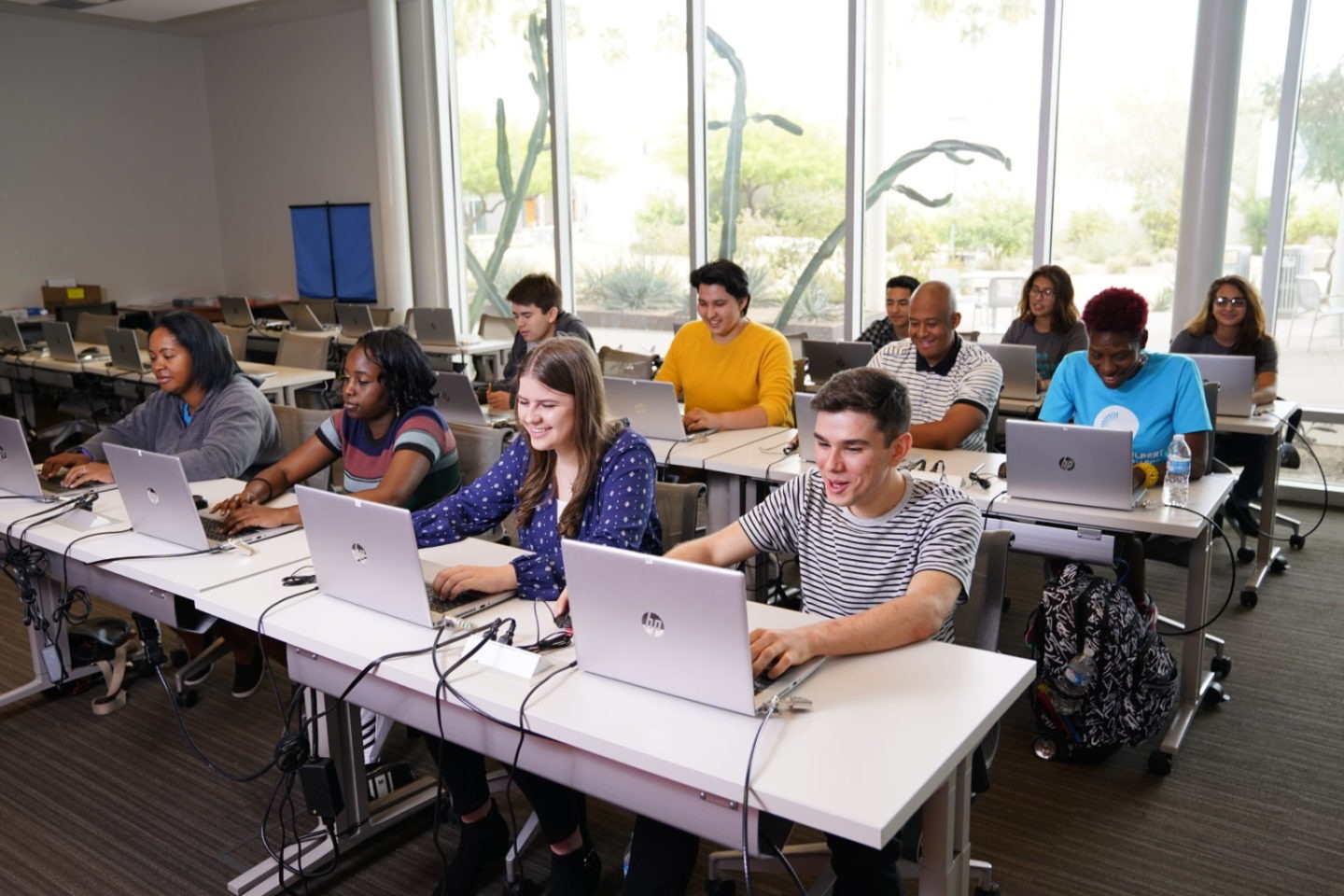The Intel AI® for Workforce Program launched in 2020 in partnership with the Maricopa County Community College District (MCCCD) in Arizona to create the first Intel-designed artificial intelligence (AI) associate degree program in the U.S.

Students at Chandler-Gilbert Community College gather for a new student orientation in 2019. Intel is partnering with Maricopa County Community College District to launch the first Intel-designed artificial intelligence associate degree program in the U.S. The program’s first phase will be piloted online at Estrella Mountain Community College and Chandler Gilbert Community College in fall 2020. (Credit: Maricopa County Community College District)
MCCCD is one of the largest community colleges in the U.S. with more than 100,000 students across 10 campuses. With this degree program, students will learn fundamental skills such as data collection, AI model training, coding and ethics. In addition, Intel contributes technical advice, faculty training, summer internships and mentorships for students and faculty members.
In 2021, Intel announced a major expansion of its AI for Workforce Program across the U.S. The program had been added in 18 institutions across 11 U.S. states that serve a total of 800,000 students, and plans to expand to 50 more community and vocational colleges in 2022 are underway.
Programs like this are incredibly important to keeping the U.S. workforce competitive and ensure that Americans are keeping up with the global demand for artificial intelligence skills that are expected to grow exponentially. Learn more about the AI associate degree program here.
